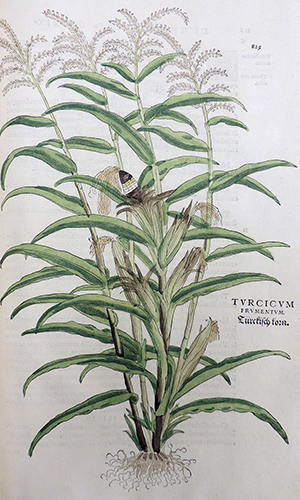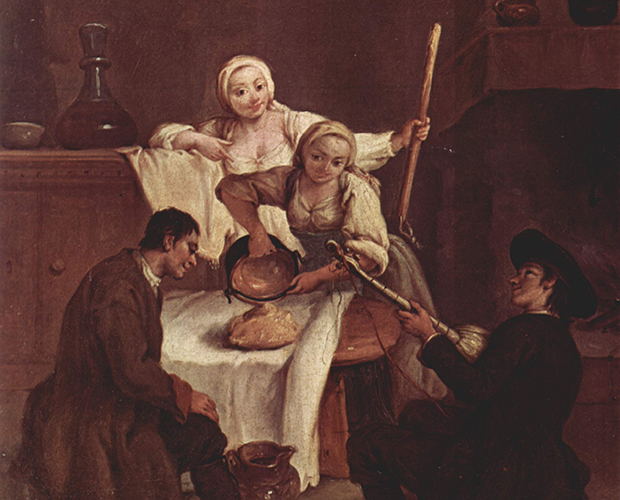Cornbread and other activities

This column’s kitchen is noisy with various vociferous identity crises.
‘Miss! Miss!…’
‘Miss! Miss!…’
‘Erm?’
‘Miss! What am I supposed to be? Cake? A loaf? Scones? A pancake?’
‘Think scones. Mix like cake. Cook like a pancake. Result: cornbread.’
Never has this column toiled so long and so cheerfully – so many recipes to try, in books and on-line, all delicious. Ingredients vary, as do methods, so let us not be dogmatic.
We can whip up a batch in less than an hour, or leave the mixture to ferment overnight.
Corn meal or polenta, varying in price from 89p at my local Afro-Indian food shop, to £2 or more at some wholefood stores or Italian delis, is the main ingredient, but you can add self-raising flour, lots of baking powder, bicarbonate of soda, salt and sugar to taste, along with eggs and buttermilk.
Some toast the corn before mixing, to get a richer flavour; some add a little masa harina, and my own contribution is a little chickpea flour. Pedantry and precision need not bother the tired-woman-in-a-hurry as we fling this stuff together, but the cooking is critical: you need a heavy cast iron skillet, and plenty of butter or good bacon fat, but never ever use anything with a non-stick surface, for the extreme heat at the start of cooking brings out nasty things in the non-stick coating which you wouldn’t want to eat.
Get the pan really hot, swirl some butter or bacon fat around (I use the fat trimmed off Parma ham at my local Italian deli, Gallo Nero, always generous with help and ideas), and when this is almost on the verge of browning, tip plenty into the bowl, stir it in, then pop the mixture into the pan and let it sizzle, and finally put in a hot oven and cook until the top is a lovely golden brown, and feels nice and solid to the touch.

This is good eaten hot from the pan, but will last a day or two and can be browned crisp under the grill; the more fat, the crunchier the result.
Cornbread is so rich and filling that you only need small amounts of meat or salad to go with it, and it is certainly more nutritious than polenta made with water and nothing else, as we shall see.
But what is corn? In England we talk of a cornfield when it could be oats or barley or most likely wheat; to us it means any kind of grain.
We call maize Indian corn, as Italians call it granturco, ‘turco’ meaning anything exotic or foreign.
Elsewhere, corn means maize, the hard, ripened seeds of Zea mays, which was first domesticated in central Mexico about 5000 BC, but as food historian Sophie Coe reminded us ‘the origin and history of maize have been the subject of academic debate of unparalleled ferocity’.
It seems there were two kinds of grain that could have been the ancestor of corn, and the dating of their appearance and use is critical in dating the early history of mankind in Mesoamerica.
All these civilizations, Maya, Aztec, Inca, worshipped corn, as a god, or goddess, or heavenly twins, or a benign spirit, as the source of life, and the means of maintaining it.
Maize drifted slowly North, where Native Americans grew many different varieties, using local plants and flour made from various seeds and nuts.
Somehow, empirically, they found that the husks of dried corn could be softened and got rid of by soaking and cooking the kernels in an alkaline solution of wood ash (potassium hydroxide) or slaked lime (sodium hydroxide). This process, nixtamalization, did not just make cooking easier, it made the corn tastier and much more nutritious, which, together with beans and chillis, and the odd tomato thrown in, made a complete and nutritionally satisfactory diet.
The tragedy was that when maize was brought to Europe by Columbus in 1492, and later by other entrepreneurs, they did not bring the expertise of thousands of years of cooking along with it.
Maize was of interest to physicians and pharmacists, and growing it from seed was a challenge for botanists, artists appreciated the beauty of the ripe corn cobs while cooks, alas, did all the wrong things with it.
Maize was easy to grow, kept well when dried, and could be ground into a coarse flour that when boiled in water made a delicious and filling meal at little cost. But, full and happy, those who could afford nothing else fell victims to deficiency diseases like pellagra and kwashiorkor, and became languid at best and at worst very poorly indeed.

A painting by Pietro Longhi, one of a series of images of everyday life in eighteenth-century Venice, shows the symptoms of this deficiency in even a comfortable middle-class household.
The men lounge in somewhat debilitated attitudes, while the pallid moon-faced girls, plump but not in a good way, gleefully dish up their deadly dose of polenta.
The first sighting of images of maize in Europe was in Rome in 1415-1517.
Giovanni da Udine’s exuberant frescoes decorating the loggia or outside terrace of Alfonso Chigi’s villa on the rural banks of the Tiber in what is now Trastevere were a celebration of fecundity and fruitfulness, helped out with some rather suggestive phallic symbolism.
Chigi was a rich banker and collector of antiquities and exotic plants, and maize was one of the expensive purchases he grew it in the ornamental gardens surrounding his villa.
This was several decades before Arcimboldo used a corn cob to represent the right ear of the Emperor Rudolph, another magnificent collector.
Meanwhile as more and more ingredients get flung into the pot a queasy silence pervades the column’s kitchen, with some sullen mutterings:
‘Miss, er Miss…’
‘?’
‘Miss, Miss, may I leave the room? This is all too rich and complicated…’
